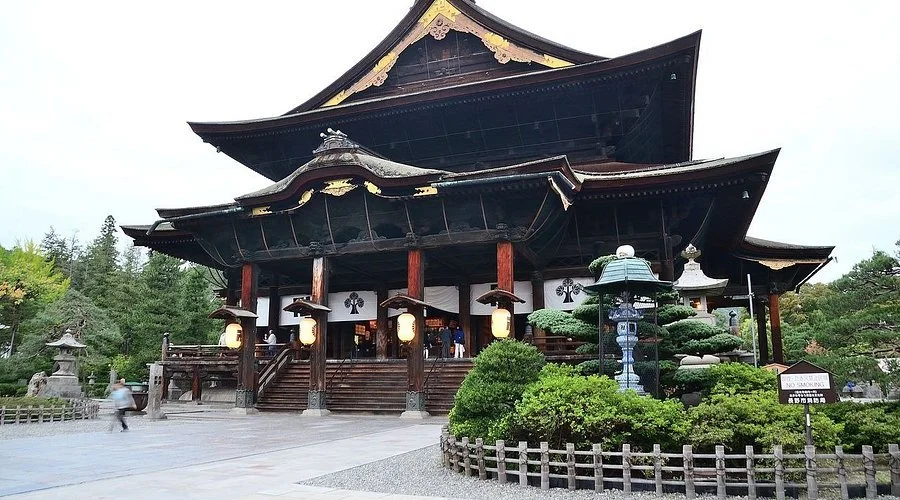
🛕 Temples and Shrines in Nagano
Nagano is home to many beautiful temples and shrines that reflect the deep spiritual traditions of Japan. From historic Buddhist temples in the city to peaceful Shinto shrines hidden in the forests and mountains, each site offers a unique experience. Visitors can connect with nature, explore Japanese history, and enjoy quiet moments of reflection. This list includes some of the most memorable spiritual places to visit in Nagano for those seeking culture, peace, and meaning.
📝 Personal Note
This page is dedicated to the temples and shrines I’ve visited across Nagano — places where natural beauty and spiritual atmosphere come together. Many are nestled in forests, near mountains, or by lakes, offering not just history and culture, but a peaceful connection to nature.
During these visits, I’ve also been collecting gōshuin — the hand-drawn seals and calligraphy offered at each temple or shrine. These small works of art are more than souvenirs; they’re a way of marking presence, intention, and quiet appreciation.
I hope this list inspires a calm and meaningful path through Nagano, guided by spirit, scenery, and silence.
🛕 Temples and Shrines in Nagano – My Experience
🛕 Zenkoji Temple
(善光寺)
One of the most important Buddhist temples in Japan. Known for its welcoming spirit, morning rituals, and pitch-dark underground passage.
🛕 Togakushi Shrine
(戸隠神社)
A sacred Shinto complex of five shrines hidden in deep mountain forest. Famous for its ancient cedar trees and mythical energy.
🛕 Uchikubijima Shrine(内堀島神社)
A small island shrine in the middle of Lake Nojiri. Quiet, scenic, and perfect for a peaceful boat trip and reflection.
🛕 Sanada Shrine
(真田神社)
Built to honor the legendary Sanada samurai clan. Located inside the historical Ueda Castle grounds.
🛕 Kitamuki Kannon(北向観音)
A rare north-facing Kannon temple, believed to balance spiritual energy with Zenkoji Temple.
🛕 Shakuson-ji / Nunobuki Kannon
A temple built dramatically into a cliffside, offering stunning views and spiritual legend of the healing Kannon.
🛕 Sarashina Shrine
(更科神社)
A poetic and peaceful shrine known for its moonlit legends and connection to classical Japanese literature.
🛕 Ikushima Tarushima Shrine
A powerful Shinto site where the gods of life and land are enshrined. Associated with balance and natural harmony.
🛕 Nyohōji Daihikaku Kannon-dō
A hidden hall in the woods in Nagano devoted to the Kannon of Great Compassion. Quiet and deeply spiritual, it offers a peaceful retreat surrounded by nature’s beauty. (Search using the kanji: 如法寺 大悲閣観音堂)
🛕 Kōsenji Temple
(光泉寺)
Overlooking the hot spring town of Kusatsu, this temple offers prayers for healing and health.
🛕 Kawanakajima Hachimansha
A shrine standing on a famous battlefield. Dedicated to Hachiman, the god of warriors and protection.
🛕 Yamaga Shrine
(山家神社)
A calm forest shrine with ties to the Sanada clan. Celebrated for its seasonal festivals and peaceful setting.
🛕 Tenkyūji Temple
(天宮寺)
A small country temple known as the "Celestial Palace." Offers quiet surroundings and classic wooden architecture.
🛕 Anrakuji Temple
(安楽寺)
Known for its rare octagonal pagoda, the only one of its kind in Japan. A peaceful Zen temple with a deep history.
🛕 Suwa Taisha Kamisha Honmiya
One of Japan’s oldest Shinto shrines. Center of mountain worship and famous for its wooden pillars and Onbashira Festival.


















